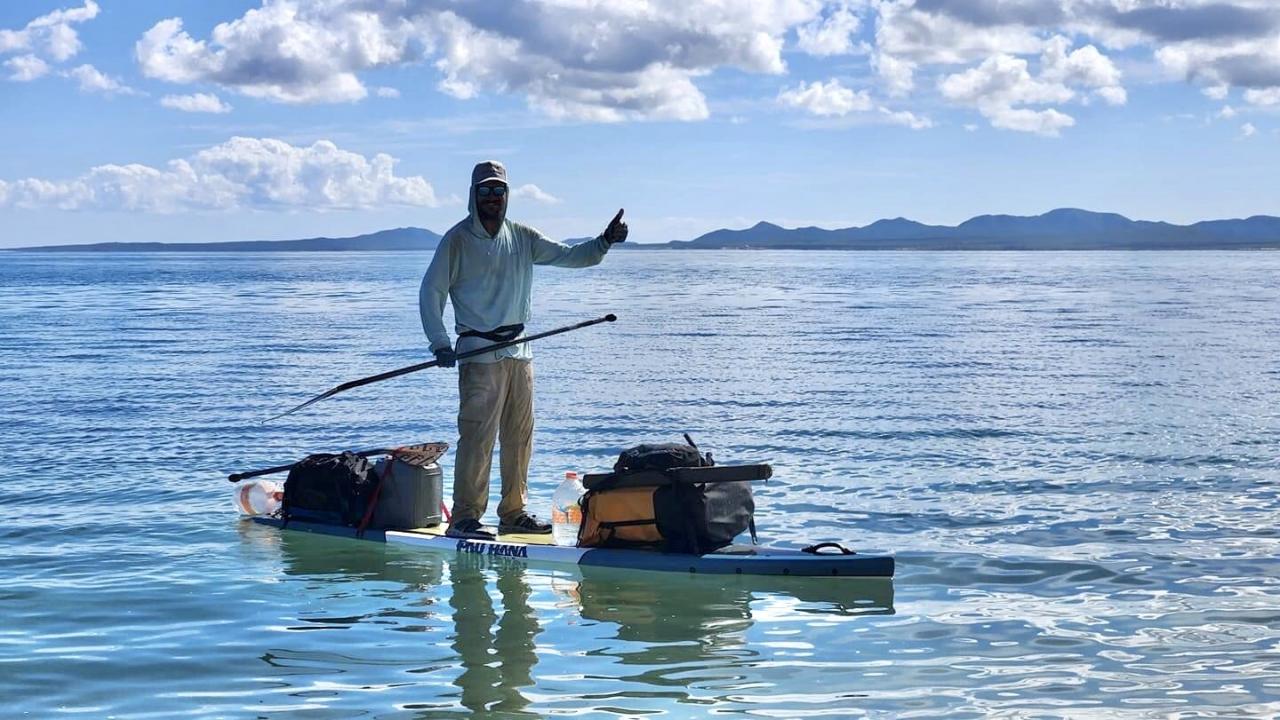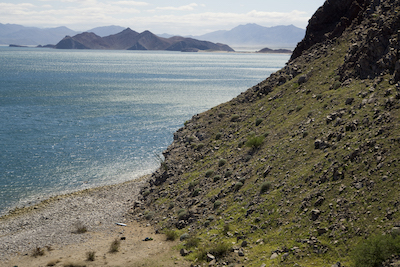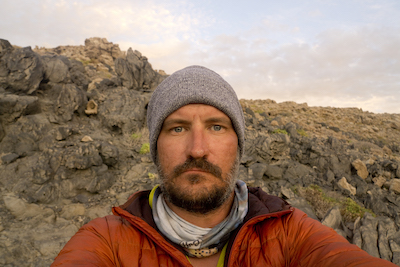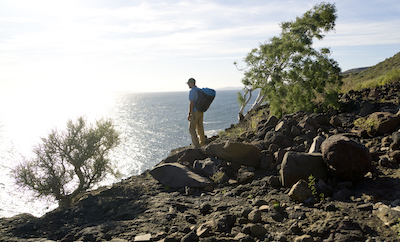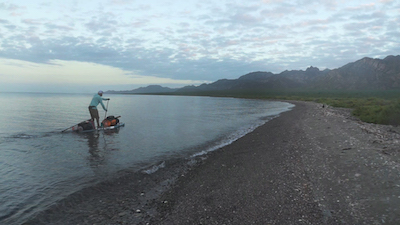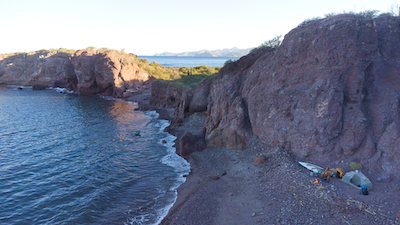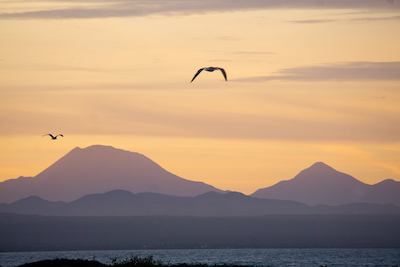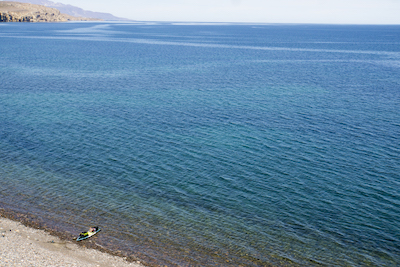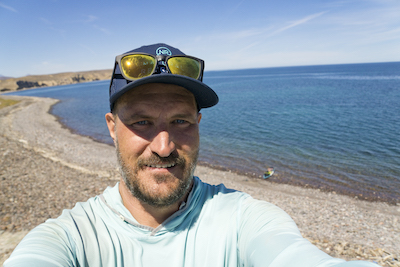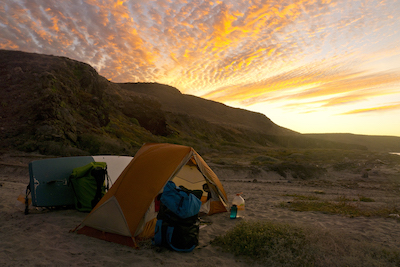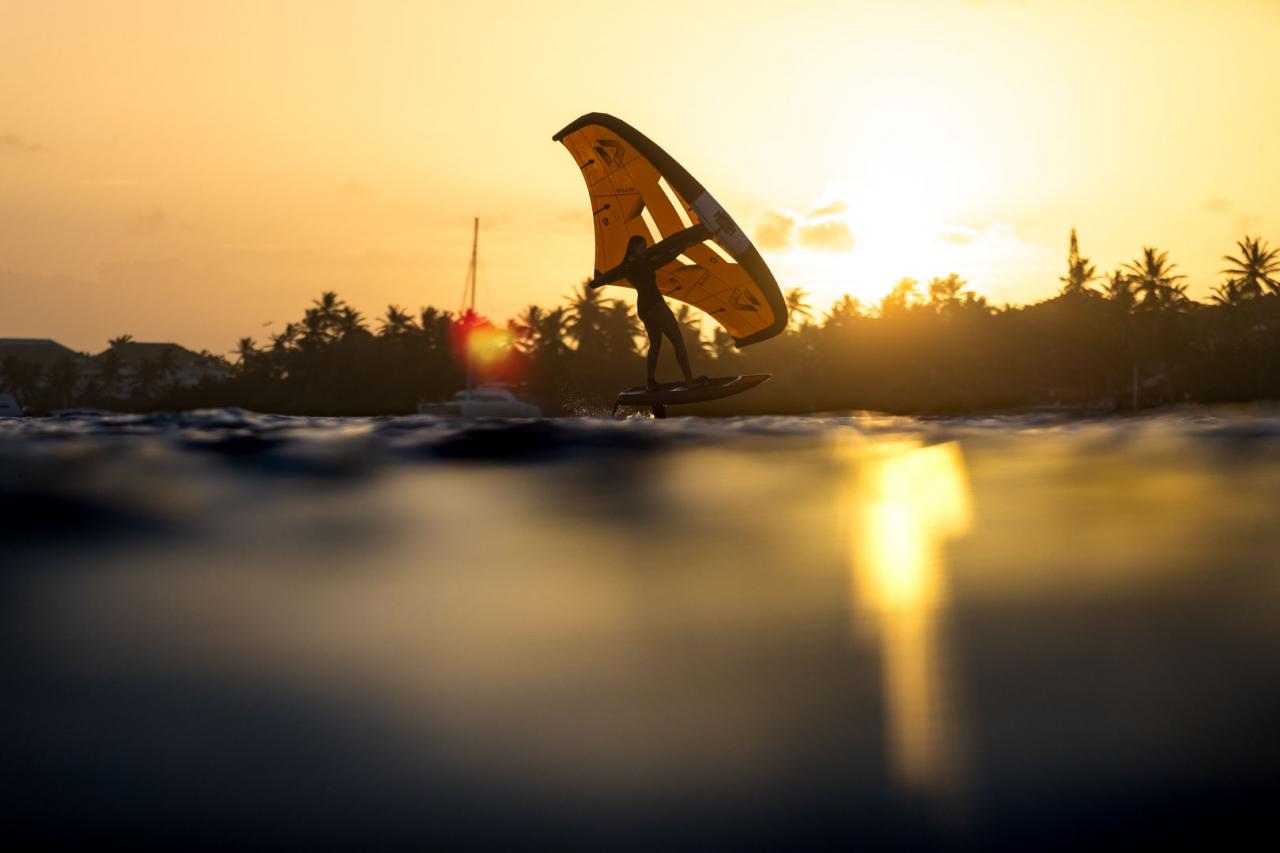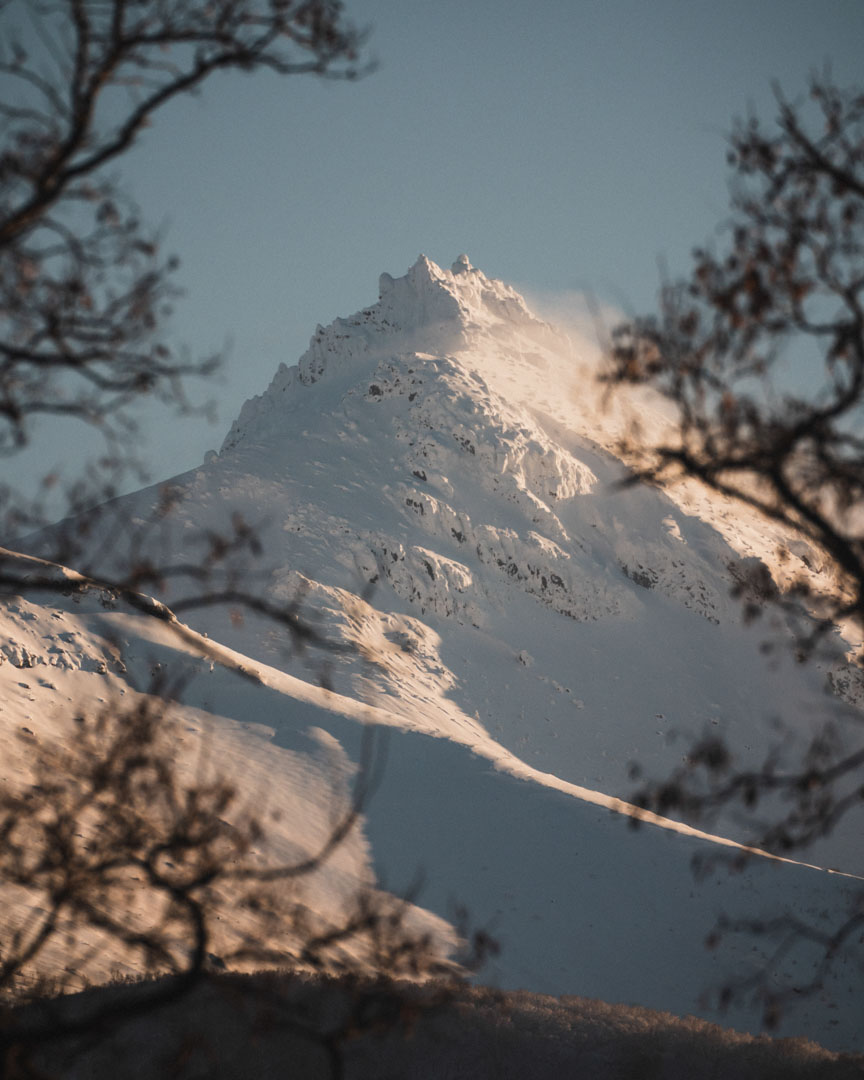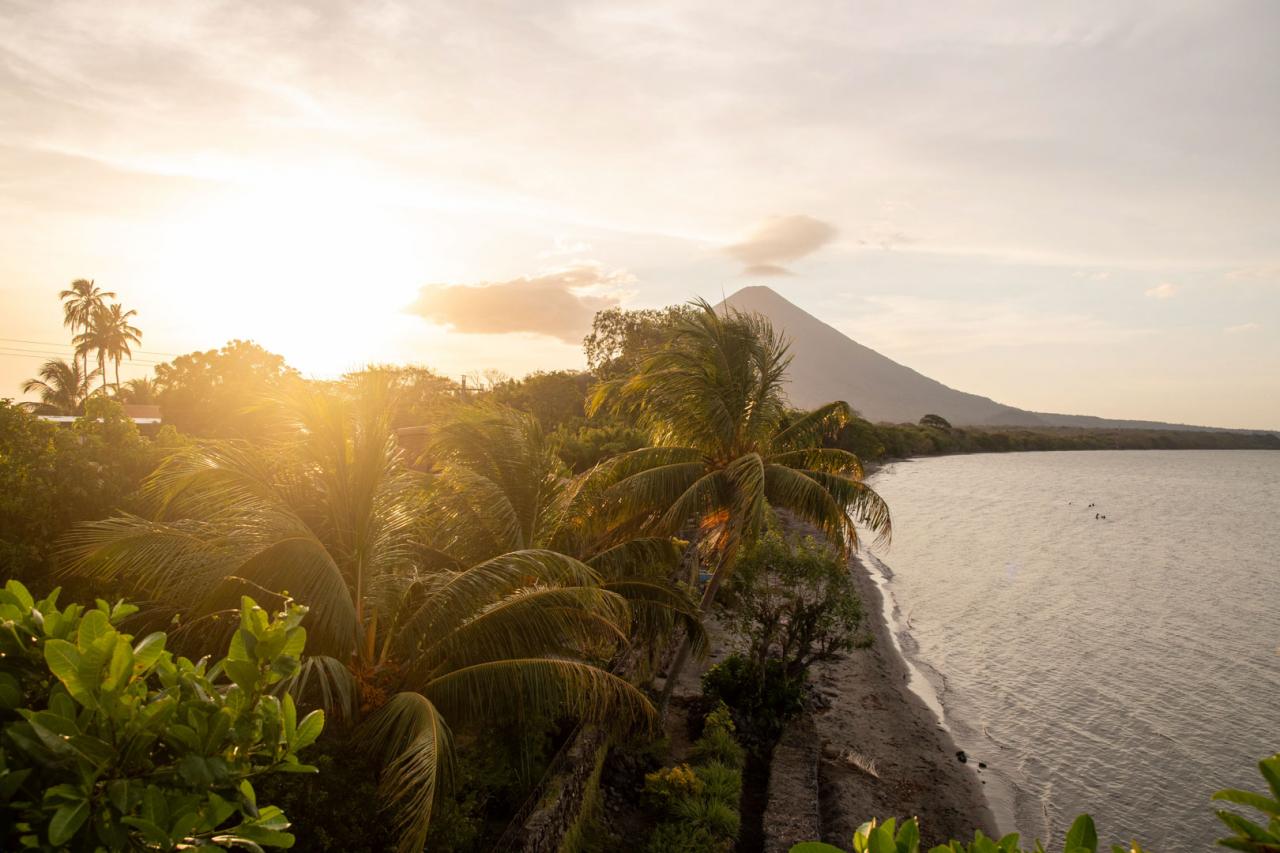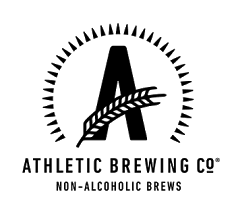Can a paddle trip save an endangered species?
The double and simultaneous spouts at my six had me out of my skin. It had been such a peaceful morning of paddling up until this point. The cool and subtle breeze coming from land eased the stress of the day after I had packed up camp and loaded everything onto my board. My muscles ached from the previous 24-mile day and my mileage today is yet to be determined. My board was fully loaded with five gallons of water, camping gear, and enough food to hopefully last me a week. Though now, two days fresh from a resupply, my water was already dwindling as if the container had a hole in it in this hot desert environment.
I was still 100 miles from anywhere and my focus was paramount. But the spouts had me curious about what was coming at me. I knew they weren’t sharks, but this solo and unsupported paddle has had me riddled with doubt, and sharks and other creatures that I never feared previously are now on my mind. The dangers on this 1,000-mile paddle from San Felipe to Cabo San Lucas in Baja, Mexico are many, but nothing as dangerous as the fate of what I’m paddling for.
The Porpoise
For nearly 20 years, I have had the fortune of traveling the Baja Peninsula to feed my soul. Growing up in Southern California, I was only an hour’s drive from the border. So each swell, each opportunity, and every paycheck deposited meant a doorway to Baja, and heading south was as easy as just turning the key to go.
But over time my mindset changed. I started to feel guilty - not happy - just driving south to go surf, go fish, or eat tacos. I wanted to give back, and with a combination of my new passion of expedition stand up paddling and a dire need for conservation for the most endangered marine mammal on the planet, I knew what my next endeavor was to be.
The Vaquita porpoise is that endangered mammal. Only living in the upper gulf of the Sea of Cortez, its life hangs by a literal fishing line since they are caught by illegal fishermen as bycatch. With numbers as low as a dozen, their sad fate seems to be just a matter of time.
The Paddle
My thought, my dream, was to paddle the length of the Baja peninsula on my 12 foot stand up paddleboard, load it with camping gear and enjoy each and every day on water that Jacques Cousteau infamously coined as the “Aquarium of the world.”
I was nearly 200 miles south of the known territory of the Vaquita, but with the simultaneous spouts of the small and porpoise-like creatures, my mind was racing. After a few minutes the scene dissipated and the creatures disappeared into the blue, never to be seen again. I was back in the desolation of the wilderness, back along the shores, the sea, and the serenity of Baja’s Sea of Cortez.
When I visualized the trip, I pictured white sand beaches, calm, turquoise waters with playful dolphins and whales coming within an arm's reach. There were moments of solitary bliss and beaches so beautiful that I may have been the first to put an impression in the sand. But these calm and turquoise waters can and do turn violent. As I learned very early on during this 123-day paddle trip, more people have paddled the inside passage of British Columbia and Alaska than the Sea of Cortez, and now I know why.
It’s a harsh environment. With cracked and sunburned lips, parched skin, and a throat so dry that you question if the water you have to carry is even working, the sweltering heat can take away all the bliss of this experience. The winds can whip up at any time and create conditions so brutal that fishermen don’t even go out in their pangas to make a living. Waves bigger than anything on the Pacific Coast can ravage the sea and leave you and your equipment tossed like a piece of driftwood along the shore if you aren’t careful. Not to mention the hurricanes that love to track up the gulf and add spice to the equation.
So planning for me was paramount. I needed to pick seasons that navigated these hurdles. I had to pick days on the water using the best forecasting tools I had to make sure I could safely round headlands, points, and long stretches without beaches. And I had to conserve water, wake early to beat the heat, and take rest days despite not wanting to.
Accomplishing this trip took three separate seasons in total, and a perseverance that I didn’t know I had. In those 123 days, only 70 of them were paddleable. I spent the 53 down days sitting in the sand, suffering in the desert heat, running out of food, and trying to find shelter. Shelter not from the sun, but from wind.
Little did I know that when I started this trip, wind was a real threat and a deadly variable. If fishermen don’t go out, what does that mean for me on a fully loaded standup paddleboard? With a single capsize in rough seas and twenty-knot winds, I found out quickly.
There are events on the Sea of Cortez called “El Norte,” or strong northern winds. They get funneled down the sea, unimpeded while gaining strength the farther south they go. Wind and waves exceeding 20 knots and five to ten feet ravage the sea. I got caught in one of these events despite the forecast not calling for it, and capsized a half-mile out to sea. I thought growing up as a surfer I could handle these conditions. I thought that I could control it, I thought I was doing fine. Then I thought I’d lost everything. The waves rolled and the wind howled and my board flipped upside down, fin pointing to the sky. My dry bags, water, and camping gear were all underwater. I was somehow able to flip my board right side up and miraculously found everything still attached. I nervously knee paddled my way to shore, unloading in the huge shore pound waves while I flopped up onto the rocky coast like a fish hooked by an angler.
With every scary encounter and life-threatening scenario, there were also moments of absolute bliss. And those moments of bliss were what helped me to persevere through each low point - bliss in nothing but the waves and tidelines rocking me to sleep, and the sea turtles coming up to breathe out of waters so clear that it didn’t even seem like the reef, fish, and other creatures were in water. This almost invited me to jump in and forget about breathing altogether, to just swim with them and join them in their community.
I talked to the natural environment, said hello to the osprey flying overhead, the dolphins playing and jumping out of the water, and the coastal reef fish, darting in and out of the rocks upon my arrival. They never talked back, always treated me like a friend, and never led me to believe I should doubt my paddle along the treacherous sections of coast with currents and wind always threatening my journey.
With what seemed like a mirage after three seasons and 123 days of paddling, the arch at Cabo San Lucas presented itself at Land’s End, at the bottom of the Baja peninsula, and the trip was over.
The Solution
I wanted to start this story about the Vaquita, as this trip was never supposed to be about my solo and unsupported paddle, arguably the first to be done on a standup paddleboard along the Sea of Cortez. I could have opened with the 6.2 magnitude earthquake that shook me awake at 3:30 in the morning with nowhere to go, or even the shark attack that had me jump out of my skin.
The point was all about the Vaquita, this porpoise, this animal on the verge of extinction. It gets tangled in illegal nets intended for a fish that is endangered and illegal to harvest. The totoaba fish is targeted by criminal fishermen because of its swim bladder, and is sold on the Chinese black market for tens of thousands of dollars. With the continuance of nets being deployed, the threat of Vaquita extinction isn’t just on the table, it’s also on the menu for each customer that enters the restaurant.
But I was able to witness something extraordinary on the trip, and that was a totoaba farm. Mexicans have replaced old and industrial shrimp farms and have remodeled them for raising the totoaba, which is a large sea bass that can be up to six feet long and weigh nearly 200 pounds. There is hope that perhaps a case can be made for the farming of totoaba instead of the fishing. And if that’s the case, nets will be removed and the populations of both the Vaquita and wild totoaba can flourish once again. It’s a non-solution to a major problem, but a step towards a direction that can at least buy the species some time to rehabilitate.
My paddle trip was one where I hoped to spread this knowledge like wildfire through a dry forest. My 1,004.50-mile paddle took 123 days, but it all started with one stroke. I am hoping it inspired someone to care enough to do their own trip to give back as well.
I learned that even someone like myself, with average grades, no major athletic accomplishments, and who is recovering from addiction, can do anything as long as they put their mind to it. The paddle trip was a dream that I conceptualized years before my paddle ever hit the water. And the perseverance I learned from finding the patience and time to finally pursue this dream was the greatest metaphor for the life of the Vaquita, one that was so appropriate. The struggles I faced on the trip were just another day for the porpoise, days that I hope continue so we can all see them flourish like they once did.

